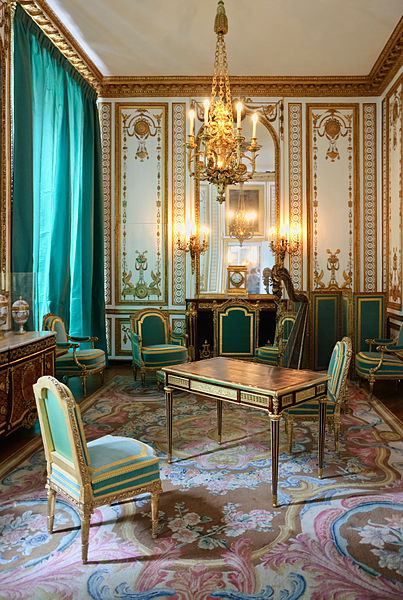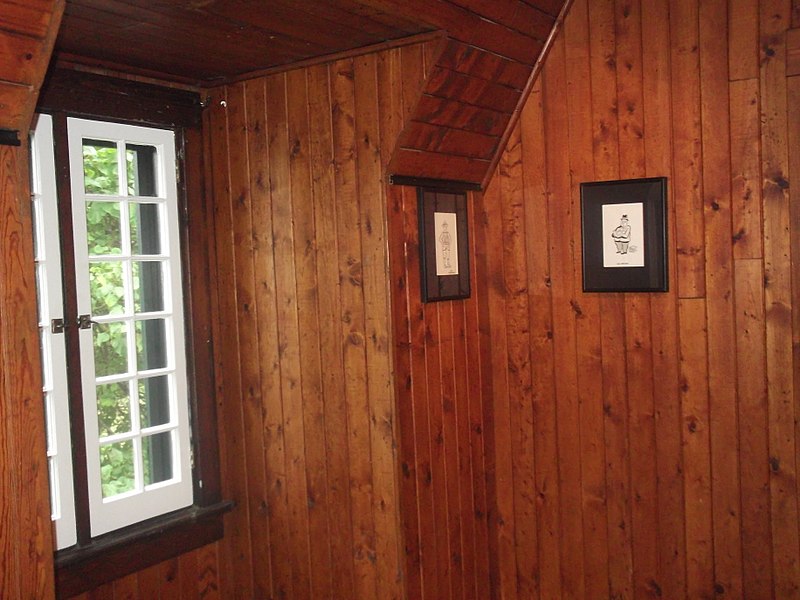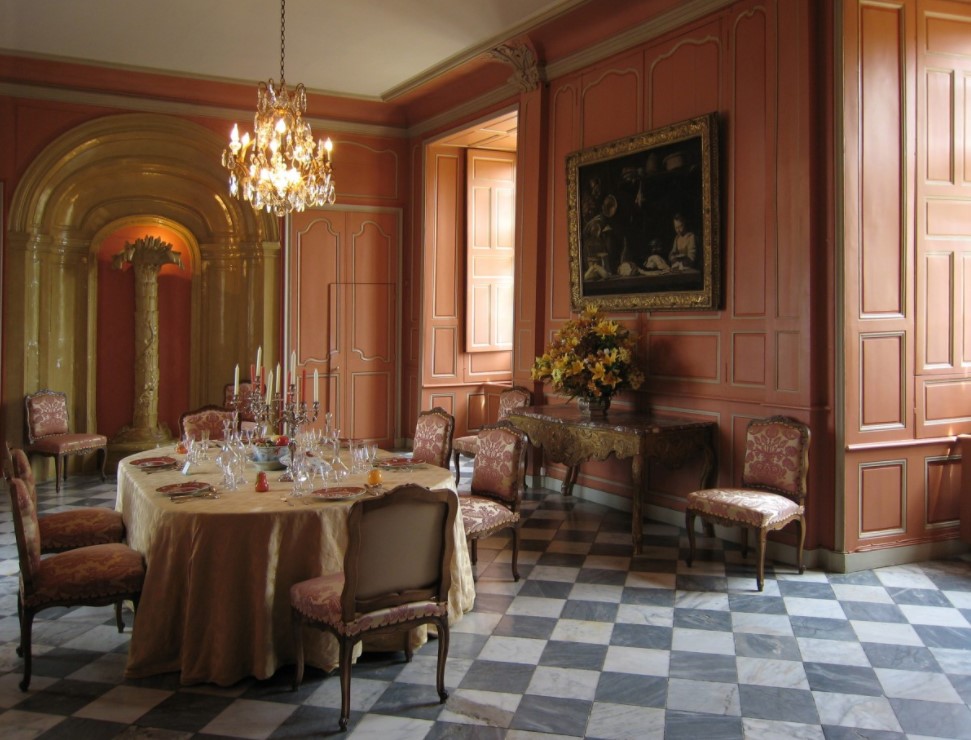Panelling
Contents |
[edit] Introduction
Panelling is a type of timber surface covering primarily used for walls, but it can also be used for furniture, installed on ceilings and so on.
[edit] History
Early evidence of wood panelling appears in the 1400s, when it began to be used as a form of covering for stone walls. Acting as a type of insulation, wood panelling helped to control draughts, reflect heat from fires and dampen sound. It also increased the aesthetic options for walls that could be more easily decorated.
Its decorative characteristics became more sophisticated as techniques from Renaissance Italy spread due its depiction in paintings and print. In Tudor England, wood panelling became highly decorative and was widely adopted in the homes of the rich and, powerful.
During this period, panelling was typically made from thin planks of oak and was often carved with patterns. A linenfold pattern that resembled a fold of fabric became popular in England in the 1500s, with more fanciful panelling appearing in the 1600s and beyond.
In 16th century France, a type of ornate wood panelling known as boiserie became popular. Both intricately carved and fancifully painted, these wall treatments became fashionable during the time of Louis XV and Louis XVI. Examples can be seen in the Palace of Versailles, where rooms of importance were decorated with boiserie that included shallow-relief carvings, painted in contrasting colours and then adorned with gilding. This technique was also applied to doors, frames and other parts of rooms.

|
| The Cabinet Doré of Marie-Antoinette at Palace of Versailles features boiseries made by the Rousseu brothers. |
A similar form of oak panelling known as wainscoting became popular in England in the 1700s. In addition to protecting walls, it helped to decrease the impact of rising damp that could occur in some types of walls.
Wainscoting was originally used in floor to ceiling applications, but was later more commonly applied to just the lower portion of walls. The use of oak decreased over the years, and other types of timber became more common.
[edit] Modern panelling
Over the years, different types of materials have been used to produce panelling.

|
| This photo is of a cultural heritage site in Canada, numbers 14362 and 10582 in the Canadian Register of Historic Places. |
[edit] Solid planks
Traditional solid wood panelling is still available and is produced as planks with a tongue and groove edges. This provides a simple way to join the planks and allows movement to prevent splitting. Hardwoods are sometimes available, but softwoods - such as pine - are more commonly used.
[edit] Wallboards
Manufactured sheet wallboards come in a wide variety of materials and are made to various standard sizes and in thicknesses. This type of panelling is typically made from plywood or hardboard panels that have been covered with different types of finishes. These can include timber veneers, coloured plastic or simulated wood (on printed paper), embossed brick, stone, plaster or tile. Wallboards can also be made from wood fibre boards and covered with cork or fabric.
[edit] Reproduction panelling
When traditional solid wood panelling is not available, there are several reproduction options. The most common are rigid, moulded urethane foam panels (sometimes available with traditional linenfold or floral patterns) or veneer-faced panels (sometimes available with oak veneers) attached to plywood.
[edit] Industrial panelling
Industrial panelling can be made from galvanised steel sheet with a rigid insulation core and a plasterboard inner lining.
[edit] Related articles on Designing Buildings Wiki
Featured articles and news
One of the most impressive Victorian architects. Book review.
RTPI leader to become new CIOB Chief Executive Officer
Dr Victoria Hills MRTPI, FICE to take over after Caroline Gumble’s departure.
Social and affordable housing, a long term plan for delivery
The “Delivering a Decade of Renewal for Social and Affordable Housing” strategy sets out future path.
A change to adoptive architecture
Effects of global weather warming on architectural detailing, material choice and human interaction.
The proposed publicly owned and backed subsidiary of Homes England, to facilitate new homes.
How big is the problem and what can we do to mitigate the effects?
Overheating guidance and tools for building designers
A number of cool guides to help with the heat.
The UK's Modern Industrial Strategy: A 10 year plan
Previous consultation criticism, current key elements and general support with some persisting reservations.
Building Safety Regulator reforms
New roles, new staff and a new fast track service pave the way for a single construction regulator.
Architectural Technologist CPDs and Communications
CIAT CPD… and how you can do it!
Cooling centres and cool spaces
Managing extreme heat in cities by directing the public to places for heat stress relief and water sources.
Winter gardens: A brief history and warm variations
Extending the season with glass in different forms and terms.
Restoring Great Yarmouth's Winter Gardens
Transforming one of the least sustainable constructions imaginable.
Construction Skills Mission Board launch sector drive
Newly formed government and industry collaboration set strategy for recruiting an additional 100,000 construction workers a year.
New Architects Code comes into effect in September 2025
ARB Architects Code of Conduct and Practice available with ongoing consultation regarding guidance.
Welsh Skills Body (Medr) launches ambitious plan
The new skills body brings together funding and regulation of tertiary education and research for the devolved nation.
Paul Gandy FCIOB announced as next CIOB President
Former Tilbury Douglas CEO takes helm.























